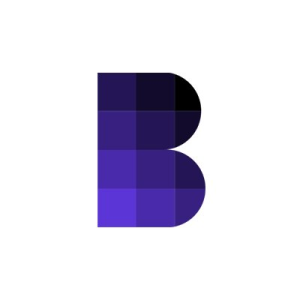Robinhood and BioSig Lead Tokenization Push in Equities and Gold
5 min read
Robinhood has seen an influx of inquiries from private firms eager to tokenize their shares after launching its equity token platform in the EU. At the same time, BioSig Technologies and Streamex have secured $1.1 billion in growth financing to kickstart a gold-backed onchain treasury business, aiming to challenge incumbents in the tokenized commodities space. Robinhood’s Tokenized Stock Platform Sparks Wave of Interest From Private Firms Amid Global Tokenization Boom Robinhood has ignited a surge of demand from private companies looking to tokenize their shares following the launch of its stock token platform in the European Union last week. In an interview with Bloomberg News on Tuesday, Robinhood CEO Vlad Tenev revealed that private firms are lining up to bring their equity onchain as tokenized assets, eager to tap into a new wave of retail investment. “Since our announcement, I’ve had a deluge of inquiries,” Tenev said. “Private companies that actually want to access retail to have their shares tokenized and be a part of this revolution.” The platform, which debuted in the EU, currently allows users to trade over 200 tokenized US equities five days a week. In a marketing move aimed at showcasing future possibilities, Robinhood also included a promotional giveaway featuring non-tradable tokens representing high-profile private firms like OpenAI and SpaceX. A Push to Democratize Access to Private Equity Tenev emphasized that Robinhood’s long-term mission is far broader than simply offering tokenized versions of existing public stocks. The company is aiming to bring thousands of private companies onto its platform, providing new pathways for retail investors to participate in traditionally exclusive investment opportunities. “We believe [this] is a huge opportunity to resolve one of the biggest inequities in capital markets,” said Tenev. “You have these massive companies that are staying private longer, and regular investors are missing out.” For years, retail investors have been locked out of the private equity space due to regulatory hurdles, high minimum investment thresholds, and limited access to early-stage deal flow. Tokenization — the process of converting real-world assets into blockchain-based tokens — offers a way to break these barriers, increasing liquidity, transparency, and inclusivity. Despite the excitement, Robinhood’s venture into tokenized assets has not gone unnoticed by regulators. The Bank of Lithuania, the supervisory body overseeing Robinhood’s EU operations, has requested clarity on how the tokens are structured. Tenev welcomed the inquiry, noting, “They want to make sure that everything is proper because it’s a new innovative offering. We’re confident. We think that these are not only important, but they’ll withstand the highest form of scrutiny.” Under the EU’s regulatory framework, tokenized stocks offered by Robinhood are treated as derivatives and must comply with both the Markets in Crypto-Assets Regulation (MiCA) and the Markets in Financial Instruments Directive (MiFID). These tokens are fully backed by underlying equities held by US brokers, with the corresponding tokens minted or burned as users buy or sell. US and UK Expansion on the Horizon While the platform is currently limited to European users, Tenev confirmed that Robinhood is in discussions with regulators in both the United States and the United Kingdom about expanding the service. “The US shouldn’t be far behind,” Tenev noted. “The opportunity is too large to ignore. Not just for retail but also institutional. And I think they’re keen. They’re having tokenization roundtables at the SEC, which we’ve been a part of.” Tenev suggested that the US Securities and Exchange Commission (SEC) could approve tokenized equities without the need for new legislation — a move that could dramatically reshape the accessibility and structure of financial markets. The entrance of Robinhood into tokenized equity trading has not gone unnoticed by incumbents. Galaxy Digital, a major crypto investment firm, has stated that Robinhood’s approach effectively removes assets from traditional finance (TradFi) channels and migrates them onchain — a move that could challenge the dominance of centralized exchanges like the New York Stock Exchange (NYSE). If successful, Robinhood’s platform could undermine the liquidity and control advantages held by legacy institutions, redistributing financial power and access. BioSig and Streamex Secure $1.1 Billion to Launch Tokenized Gold Platform, Challenge Paxos and Tether in Onchain Commodities In related news, BioSig Technologies and Streamex have secured $1.1 billion in growth financing to establish a gold-backed onchain treasury platform, marking a significant expansion into the tokenized commodities space. The companies, which signed a letter of intent to merge on May 5, said the new funding will serve as a foundation for launching a suite of blockchain-based gold financial products and structured instruments. The financing comprises $100 million in senior secured convertible debentures and a $1 billion equity line of credit, providing the new entity with both operational flexibility and deep liquidity to seed its tokenization strategy. At the heart of the initiative is a plan to tokenize physical gold and gold-related assets, offering investors a digitally native alternative to traditional gold exposure. The new venture will compete directly with industry incumbents Paxos Gold (PAXG) and Tether Gold (XAUT), which currently dominate the market with combined capitalizations of $1.74 billion, according to CoinGecko. But BioSig and Streamex are not simply copying the competition. Henry McPhie, CEO of BioSig and co-founder of Streamex, said that their model will diverge from existing frameworks. Unlike Paxos and Tether — which back their tokens 1:1 with gold stored in vaults — McPhie hinted that the new model could involve structured or synthetic gold products, which could offer broader financial instruments beyond pure spot exposure. Four Revenue Streams and a 2026 Launch Target BioSig and Streamex aim to generate revenue through four distinct channels: Origination fees for structuring tokenized assets Tokenization fees tied to asset issuance Secondary market trading fees Spread income from market-making activities and liquidity provision The company plans to launch its first tokenized gold product by early 2026, with expectations to tap into demand from both retail and institutional investors seeking blockchain-based exposure to commodities. Despite the positive long-term outlook, the news was met with short-term volatility. BioSig’s stock fell 27.4% on Tuesday, though it remains up over 541% in the last six months, a reflection of investor anticipation for the company’s strategic transformation. Commodities Tokenization Still in Early Stages While RWAs have become one of crypto’s breakout narratives in 2025, tokenized commodities remain a relatively small slice of the $24.5 billion tokenization market, according to RWA.xyz. Currently, the total market capitalization for tokenized commodities stands at $1.62 billion, with gold-backed tokens accounting for 98.9% of that figure. Tokenized commodities market over time (Source: RWA.xyz ) Among the eight tokenized precious metal products listed on RWA.xyz: Six are backed by gold One is tied to silver One is linked to platinum BioSig and Streamex will be entering a space heavily concentrated in gold, but still largely underserved compared to traditional commodity markets. Statista projects the global commodities market will reach $142.9 trillion in 2025, suggesting enormous room for tokenized penetration. As more financial firms explore RWA tokenization, the space is beginning to attract attention from regulators across multiple jurisdictions. While no specific regulatory hurdles have been cited by BioSig or Streamex, the structured nature of their planned products — and the use of convertible debt in their funding stack — suggests future offerings may undergo close scrutiny. That said, growing institutional interest, a wave of tokenization pilot programs from asset managers, and the increased popularity of onchain finance all point to a maturing ecosystem that could soon support more complex, compliant gold-backed instruments.

Source: Coinpaper



